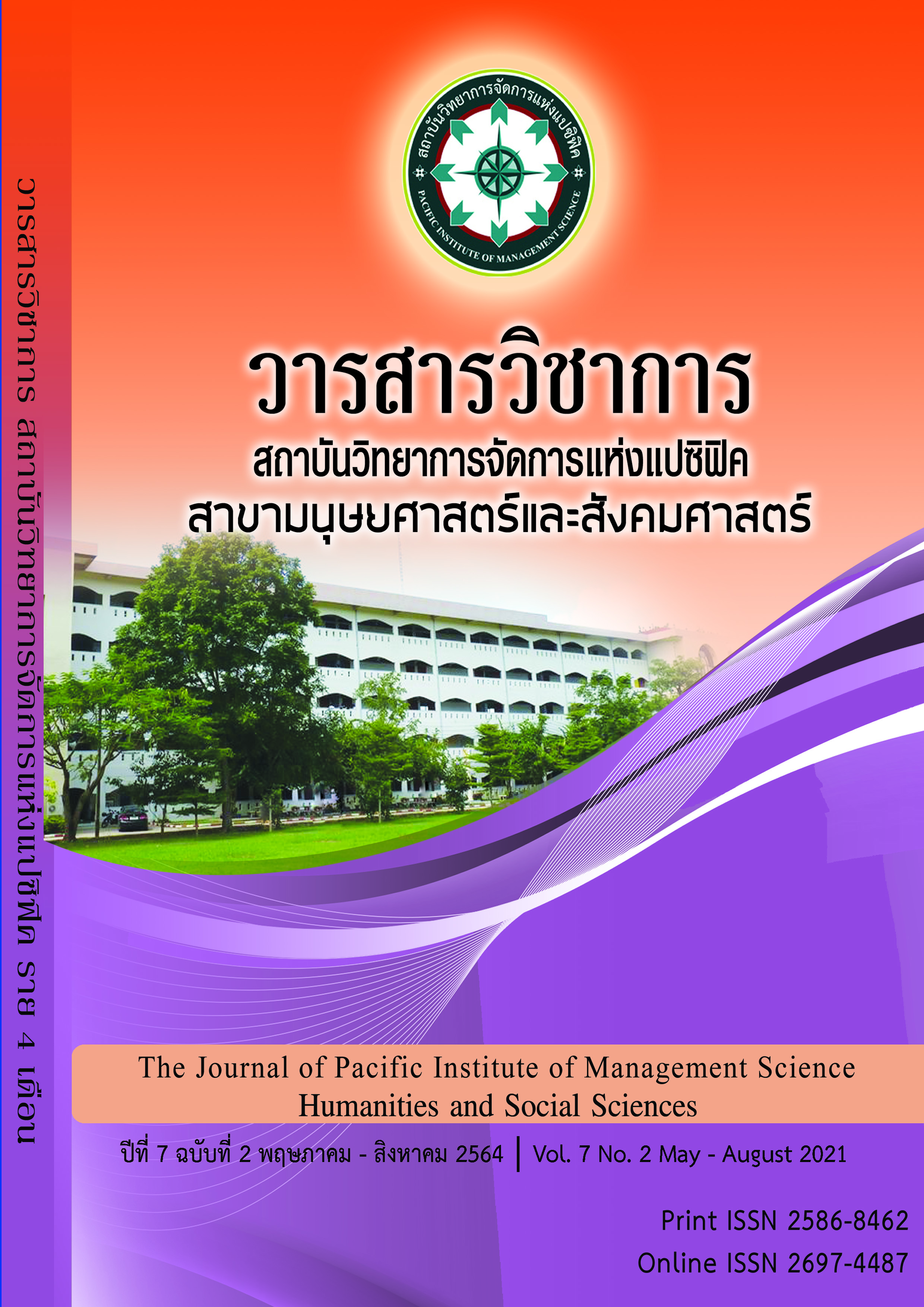DEVELOPMENT GUIDELINES FOR VIOLIN TEACHING BASED ON SUZUKI APPROACH
Keywords:
Suzuki Approach; Violin; Development GuidelineAbstract
This document is a qualitative research. The research’s aims were: 1) to study the current state and problems faced in violin teaching based on the Suzuki approach and 2) to present potential solutions and suggested guidelines for violin teaching based on the Suzuki approach. A total of sixteen subjects, consisting of ten Suzuki qualified violin teachers, three Suzuki parents and three Suzuki students, were recruited via purposeful sampling. Data were gathered using semi-structured interviews and non-participation observation, and analyzed using descriptive analysis method.
The results of the first part show that the current state and problems of violin teaching include: 1) Teacher – most Suzuki violin teachers graduated with a degree in music, have moderate to very good music playing skills, knowledge of music theory and good vocal skills, participate in trainings regularly, create a learning environment, cooperate with parents, and have good personality. 2) Students – there are many young students nowadays. Parents and teachers involve in motivating students. Most students do not practice enough. 3) Violin teaching – teachers provide violin teaching systematically according to the training guidelines and by applying other teaching approaches. The note reading teaching according to Suzuki approach causes problems in most students but not in students studying along with other instruments. Students with more experience or older are not likely interested in group learning, and teachers assess the results based on the actual condition. 4) Learning environment – teachers properly organize a classroom environment; each individual environment is different. According to the results of the second part, potential solutions are that: 1) Teacher – the Thailand Association of Talent Education and affiliated School should provide grants to teachers for a discount on the training fee, promote and encourage teachers to participate in the training for applying teaching approaches align with Suzuki philosophy.2) Students – teachers and parents should consider the goals and readiness of students for more encouragement to practice and study in the classroom.3) Violin teaching – teachers should begin teaching note reading early, make teaching approaches more interesting, properly arrange students in group classes according to the book level.4)Learning environment – the school should set up a class schedule properly, by considering disturbance sound and classroom size based on the number of students.
References
กุลิสรา จิตรชญาวณิช. (2561). การศึกษาและความเป็นครูไทย. กรุงเทพมหานคร: สำนักพิมพ์แห่งจุฬาลงกรณ์มหาวิทยาลัย.
ณรุทธ์ สุทธจิตต์. (2555). ดนตรีศึกษา: หลักการและสาระสำคัญ. กรุงเทพมหานคร: สำนักพิมพ์แห่งจุฬาลงกรณ์มหาวิทยาลัย.
ณรุทธ์ สุทธจิตต์. (2541). จิตวิทยาการสอนดนตรี. กรุงเทพมหานคร: สำนักพิมพ์แห่งจุฬาลงกรณ์มหาวิทยาลัย.
ทิศนา แขมมณี. (2559). ศาสตร์การสอน: องค์ความรู้เพื่อการจัดกระบวนการเรียนรู้ที่มีประสิทธิภาพ. (พิมพ์ครั้งที่ 20). กรุงเทพมหานคร: สำนักพิมพ์แห่งจุฬาลงกรณ์มหาวิทยาลัย.
ธีรศักดิ์ อุปไมยอธิชัย. (2560). พื้นฐานการจัดการการศึกษา. กรุงเทพมหานคร: สำนักพิมพ์แห่งจุฬาลงกรณ์มหาวิทยาลัย.
บุญชม ศรีสะอาด. (2541). การพัฒนาการสอน. กรุงเทพมหานคร: ชมรม เด็ก.
ผุสดี กลิ่นเกษร. (2562). การเรียนรู้ตลอดชีวิตกับการพัฒนาทักษะชีวิต. ในมหาวิทยาลัยศรีปทุม, หนังสือประมวลบทความ การประชุมวิชาการระดับชาติและนานาชาติ ครั้งที่ 14 (หน้า 1440-1447). กรุงเทพฯ: มหาวิทยาลัยศรีปทุม.
ภัทริศ ทรัพย์สุนทร. (2557). ทักษะการเล่นไวโอลินและเจตคติต่อการ เรียนไวโอลินของนักเรียนชั้นประถมศึกษาปีที่ 4 โรงเรียนสารสาสน์ วิเทศธนบุรีที่เรียนรู้โดยวิธีการสอนแบบบทบาทสมมุติและวิธีการ สอนแบบสาธิต. วารสารวิชาการมหาวิทยาลัยกรุงเทพธนบุรี 3 (2): 75-85
วิตต์ธาดา เภาคำ. (2556). การนำเสนอแนวทางการจัดการเรียนการสอน ดนตรีโดยใช้ดนตรีคลาสสิคและดนตรีสมัยนิยมเพื่อพัฒนาทักษะ เปียโนของนักเรียนเปียโนระดับชั้นต้น. (วิทยานิพนธ์ปริญญา มหาบัณฑิต). จุฬาลงกรณ์มหาวิทยาลัย, คณะครุศาสตร์, สาขาดนตรี ศึกษา.
วิจิตรา เตรียมตระการผล. (2558). การเรียนการสอนไวโอลินของแผนก ศิลป์- ดนตรีในโรงเรียนระดับมัธยมศึกษาเขตกรุงเทพมหานคร. (วิทยานิพนธ์ปริญญามหาบัณฑิต). มหาวิทยาลัยมหิดล, บัณฑิต วิทยาลัย, สาขาดนตรีศึกษา.
สุกรี เจริญสุข. (2555). ศักยภาพความเป็นเลิศด้านดนตรี: ดนตรีกับเด็ก. นครปฐม: วิทยาลัยดุริยางคศิลป์, มหาวิทยาลัยมหิดล.
สุรางค์ โค้วตระกูล. (2559). จิตวิทยาการศึกษา. กรุงเทพมหานคร: สำนักพิมพ์แห่งจุฬาลงกรณ์มหาวิทยาลัย.
ศศิธร เวียงวะลัย. (2556). การจัดการเรียนรู้. กรุงเทพมหานคร: โอเดียนสโตร์.
อาภรณ์ ใจเที่ยง. (2553). หลักการสอน (ฉบับปรับปรุง). กรุงเทพมหานคร: โอเดียนสโตร์.
อ้อมพร โฆวินทะ. ประธานสมาคมทาเลนท์แอ็ดดูเคชั่นแห่งประเทศไทย. (8 กรกฎาคม 2562). สัมภาษณ์.
Behrend, L., & Keats, S. (1998). The Suzuki Approach. Miami, FL: Summy-Birchard.
Bjork, M. (2008). Expanding Horizons: The Suzuki-Trained Violinist Grows Up. Van Nuys, CA: Alfred.
Goodner, C. E. (2017). Beyond the Music Lesson: The Habits of Successful Suzuki Families. Hillsboro, OR: Brookside Suzuki Strings.
Hollenbaugh, K. N. (2018). A Descriptive Analysis of Instructional Strategies Used by Suzuki and Non- Suzuki Studio Violin Teachers. (Master’s thesis). Available from ProQuest Dissertations and Thesis database. (UMI No. 10840377)
Krigbaum, C. D. (2005). The Development of an Audiation- based Appraoch to Suzuki Violin Instruction Based on the Application of Edwin E. Gordon’s Music Learning Theory. (Master’s thesis). Available from ProQuest Dissertations and Thesis database. (UMI No. 1427646)
Lee, Y. (2012). A Pedagogical Guide to Suzuki Violin School, Volume 4 Using the Suzuki Method. (Master’s thesis). Available from ProQuest Dissertations and Thesis database. (UMI No. 3539921)
O’Neill, A. (2003). Parent as home teacher of Suzuki cello, violin, and piano students: observation and analysis of Suzuki method practice sessions. (Doctoral document). Available from ProQuest Dissertations and Thesis database. (UMI No. 3119251)
Pum-In, P. (2004). The Factors Related to the Achievement in Learning Violin. (Master’s thesis). Mahidol University, Faculty of Graduate Studies.
Slavin, R. E. (2009). Educational Psychology Theory and Practice. Upper Saddle River, NJ: Pearson
Slone, K. C. (1982). They’re rarely too young-and never too old “to Twinkle”. Lexington, KY: Life Force.
Starr, W. (2000). The Suzuki Violinist. Van Nuys, CA: Alfred.
Su, C. (2012). A new American school of string playing- a comparison of the O’connor violin method and the
Suzuki violin method. (Doctoral essay). Available from ProQuest Dissertations and Thesis database. (UMI No. 3511812)
Suzuki, S. (1981). Ability Development from Age Zero. (M. L. Nagata, Trans.). USA: Summy-Birchard. (Original work published 1969).
Suzuki, S. (1998). Shinichi Suzuki: His speeches and essays. Van Nuys, CA: Alfred.
Yu, S. (2011). A Pedagogical Guide: Using Sassmannshaus’s Early Start on the Violin, Volumes 1 and 2 as a supplement to the Suzuki Violin School, Volume 1. (Doctoral document). Available from ProQuest Dissertations and Thesis database. (UMI No. 3539955)
Downloads
Published
Issue
Section
License
Copyright (c) 2020 Pacific Institute of Management Science

This work is licensed under a Creative Commons Attribution-NonCommercial-NoDerivatives 4.0 International License.
บทความที่ได้รับการตีพิมพ์เป็นลิขสิทธิ์ของ สถาบันวิทยาการจัดการแห่งแปซิฟิค
ข้อความที่ปรากฏในบทความแต่ละเรื่องในวารสารวิชาการเล่มนี้เป็นความคิดเห็นส่วนตัวของผู้เขียนแต่ละท่านไม่เกี่ยวข้องกับสถาบันวิทยาการจัดการแห่งแปซิฟิค และคณาจารย์ท่านอื่นๆในสถาบันฯ แต่อย่างใด ความรับผิดชอบองค์ประกอบทั้งหมดของบทความแต่ละเรื่องเป็นของผู้เขียนแต่ละท่าน หากมีความผิดพลาดใดๆ ผู้เขียนแต่ละท่านจะรับผิดชอบบทความของตนเองแต่ผู้เดียว







